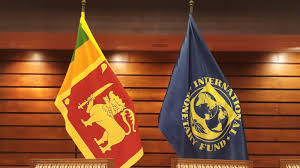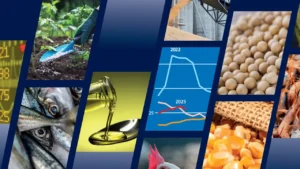
Sri Lanka’s Economy Balancing Recovery and Risk
- CNL Reporter
- June 14, 2025
- Weekly Economic Review
- economy
- 0 Comments
Weekly Economic Review – Ending June 14, 2025
IMF Praise and Sectorial Growth Counter External Pressures, but Inequality Persist
Sri Lanka’s economic performance for the week ending June 14, 2025, presents a nuanced outlook—marked by signs of recovery, reform momentum, and resilience, yet weighed down by global headwinds and internal vulnerabilities. Positive developments such as commendations from the International Monetary Fund (IMF), moderate industrial growth, and proactive investment efforts were somewhat overshadowed by external shocks, domestic socio-economic challenges, and volatile financial markets.
Reform Momentum and Multilateral Support
The IMF acknowledged Sri Lanka’s continued progress in implementing its economic reform agenda. Improvements in inflation control, rebuilding of international reserves, and ongoing debt restructuring efforts were noted as key achievements. These gains are critical in reinforcing investor confidence and ensuring macroeconomic stability.

Complementing this optimism, the Asian Development Bank (ADB) maintained its growth forecast at 3.9% for 2025, citing modest economic recovery driven by structural reforms. However, the forecast was tempered by prevailing uncertainties and external risks, particularly in energy prices and global trade.
Sectoral Developments and Investment Initiatives
On the domestic front, the government ramped up efforts to attract foreign direct investment (FDI). Negotiations are underway to secure German investments in the tourism sector, while Singaporean firms are setting up apparel manufacturing operations with local collaboration. These initiatives are expected to support employment and exports.
In parallel, the Credit Information Bureau (CRIB) has initiated its digital transformation, aimed at enhancing financial inclusion and improving credit access. This digital shift could significantly reduce bottlenecks in financial intermediation and broaden access to credit, especially for small and medium-sized enterprises (SMEs).
Meanwhile, the government is planning a revamp of the electricity tariff system. The proposed revision aims to make electricity pricing more transparent and cost-reflective—vital for energy sustainability and attracting investment in the sector.
Industrial Output and Key Commodities
According to the Index of Industrial Production (IIP), output in April 2025 rose by 1.7% year-on-year, largely driven by the manufacture of non-metallic mineral products (+21.1%), beverages (+15.9%), and apparel (+2.5%). This modest industrial momentum reflects a slow but steady recovery across key manufacturing segments.

In agriculture, tea production registered year-on-year gains between January and April, primarily due to favorable weather conditions in March and April. However, rubber production declined during the same period. Coconut output showed some recovery in April but still lagged behind 2024 levels.
External Shocks and Market Volatility
Geopolitical tensions in the Middle East continue to ripple across the global economy, with Sri Lanka feeling the brunt in oil prices and market sentiment. Crude oil prices spiked significantly during the review period, driven by concerns over supply disruptions following Israeli strikes on Iran. Brent and WTI crude each rose by over USD 9 per barrel, pushing prices past USD 75 per barrel.
These developments have had a tangible impact on Sri Lanka’s stock market. While the All Share Price Index (ASPI) rose marginally by 0.19% to 17,427.08 points, and the S&P SL20 index by 0.31%, investor sentiment remains fragile. The Colombo Stock Exchange remains sensitive to global events, and volatility continues to affect capital markets.
Despite oversubscription in Treasury auctions—with T-Bills and T-Bonds attracting 2x and 2.4x demand respectively—secondary market activity fell by 30% compared to the previous week. However, foreign holdings in government securities rose 3% week-on-week, reflecting cautious optimism.
Monetary Sector Trends
In monetary indicators, the Weekly Average Weighted Prime Lending Rate (AWPR) fell slightly by 16 basis points to 8.21%, indicating easing borrowing costs for prime clients. The Average Weighted Call Money Rate (AWCMR) also dipped marginally to 7.68% by June 13.
Broad money (M2b) expanded by 11.3% in April 2025 compared to a year earlier. Credit flows were notably strong, with credit to the private sector increasing by Rs. 87 billion—a year-on-year growth of 15.2%. Credit to public corporations also rose by Rs. 4.4 billion, while net credit to the government grew by Rs. 21.4 billion.
Reserve money increased during the week, largely due to higher currency circulation and deposits held by commercial banks at the Central Bank. Market liquidity posted a surplus of Rs. 187.53 billion by June 13, up from Rs. 173.74 billion the previous week.
Persistent Socioeconomic Challenges
Despite visible progress in economic indicators, Sri Lanka continues to grapple with entrenched social challenges. The World Bank highlighted the ongoing impact of austerity measures, particularly those linked to IMF conditions, on real wages and household spending. Rising living costs and stagnant incomes are squeezing low- and middle-income families.
Poverty levels remain elevated, while food insecurity continues to affect vulnerable populations. These issues are exacerbated by global uncertainties, including inflationary pressures from oil prices and disruptions to regional trade routes.

The tourism and aviation sectors, vital for foreign exchange and employment, are under strain due to flight adjustments and declining traveler confidence amid geopolitical instability. Limited domestic economic opportunities are also prompting more Sri Lankans to seek employment abroad, as reflected in increased applications to the Foreign Employment Bureau.
Exchange Rate and External Position
The Sri Lankan rupee has depreciated by 2.2% against the US dollar year-to-date as of June 13. While manageable in the current context, exchange rate pressures could intensify if global oil prices remain elevated or capital inflows slow.

Outlook
Sri Lanka’s economy is showing signs of recovery underpinned by reform, investment attraction, and moderate sectoral growth. However, the path to sustained and inclusive development remains uncertain. Policymakers must strike a balance between fiscal discipline and social protection, while addressing vulnerabilities in external trade, food security, and income inequality.
The coming weeks will be crucial in gauging the resilience of the recovery, especially as geopolitical risks and global financial conditions evolve. The reform momentum must be maintained—alongside efforts to uplift vulnerable communities—to secure long-term stability and prosperity.

